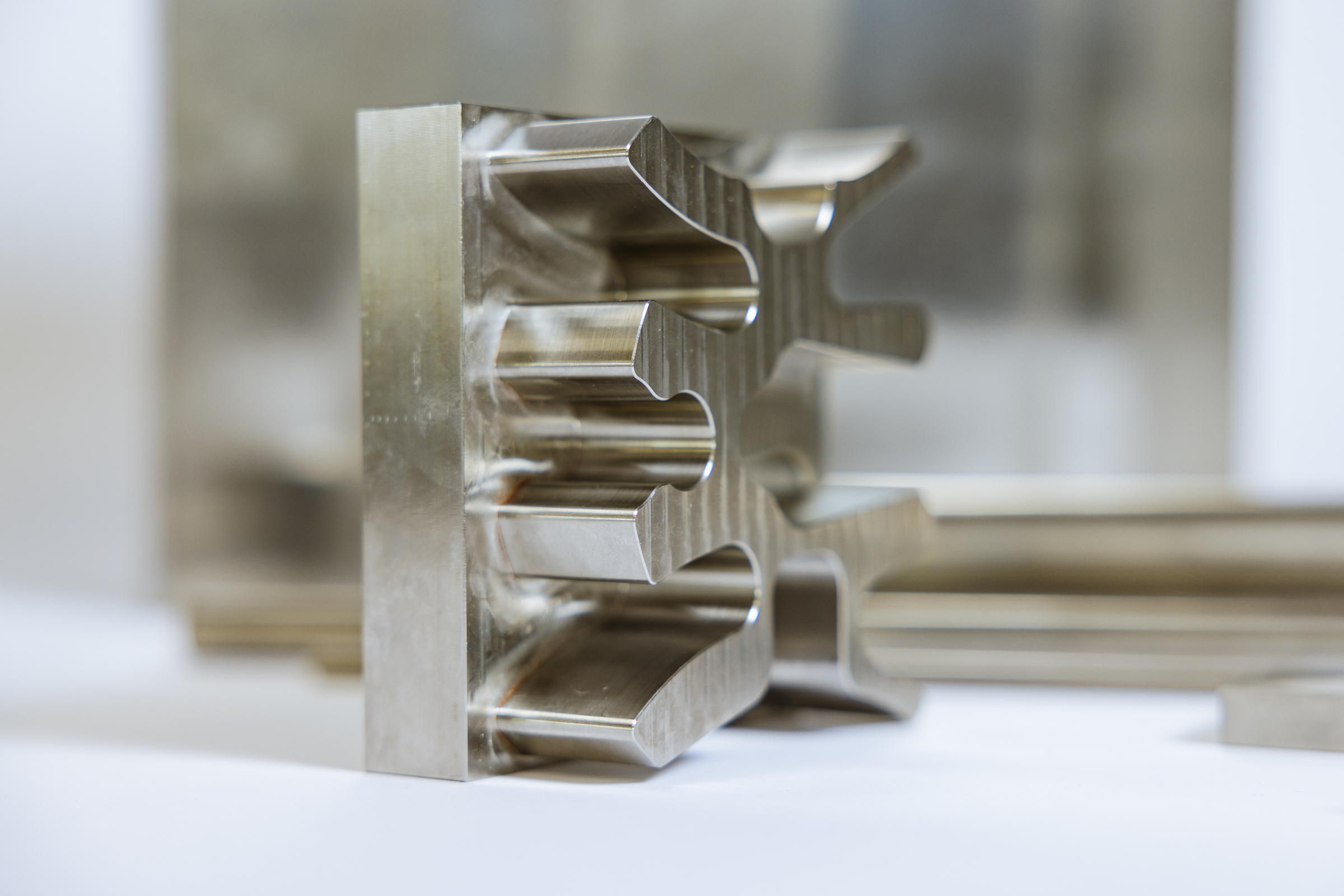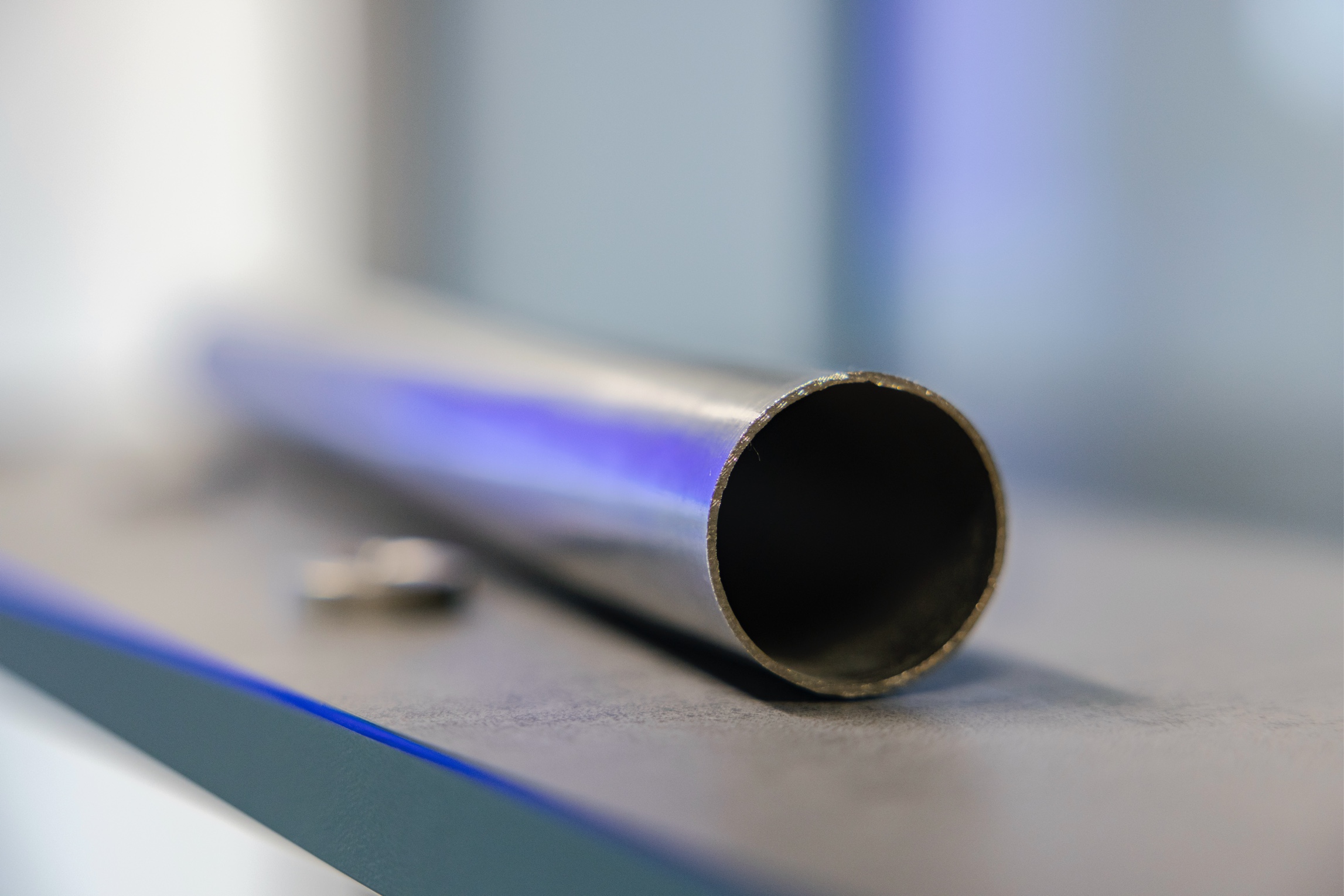Titanium
Strong, light, and corrosion-resistant
Looking for a strong yet lightweight metal? Titanium boasts the highest strength-to-weight ratio of all elements. It is stronger than steel, yet nearly half as light. Additionally, it offers significantly better corrosion resistance than most stainless steel types. As a result, applications that traditionally used stainless steel are increasingly being replaced with titanium.
| Properties | Titanium has the highest strength-to-weight ratio of all elements, offers good corrosion resistance, has high biocompatibility, and is non-magnetic. |
| Applications | Titanium is used in aerospace, chemical industry, offshore, medical implants, pipelines, and sports equipment. |
Titanium tube
View the alloysTitanium wire
View the alloysTitanium foil
View the alloysTitanium plate
View the alloysTitanium rod
View the alloysTitanium tube
View the alloys- ASTM B348/ASME SB348
- ASTM B381/ASME SB381
- ASTM B265/ASME SB265
- AMS 4928
- AMS 4911
- ASTM B338/ASME SB338
- ASTM B861/ASME SB861
- ASTM B862/ASME SB862
- ASTM F136
- GSA 08 3040 (STA)
- ASTM F1295
- AMS 4986C
- ASTM F1472
- AMS 4986C
- AMS 4986C
- ASTM F1472
- ASTM F1295
- ASTM F1295
- ASTM F1472
- GSA 08 3040 (STA)
- GSA 08 3040 (STA)
- ASTM F136
- ASTM F136
- ASTM B862/ASME SB862
- ASTM B862/ASME SB862
- ASTM B861/ASME SB861
- ASTM B861/ASME SB861
- ASTM B338/ASME SB338
- ASTM B338/ASME SB338
- AMS 4911
- AMS 4911
- AMS 4928
- AMS 4928
- ASTM B265/ASME SB265
- ASTM B265/ASME SB265
- ASTM B381/ASME SB381
- ASTM B381/ASME SB381
- ASTM B348/ASME SB348
- ASTM B348/ASME SB348

What is Titanium?
Titanium ranks as the 9th most abundant element in the Earth’s crust and the 4th most common metal component. It is number 22 on the periodic table, with an atomic weight of 47.90, and is identified by the symbol “Ti.” Titanium is extracted in the form of rutile quartz and from the mineral ilmenite. Rutile is generally mined in Australia, China, Canada, and the United States.
[button text=”View specifications” link=”#”]

How is Titanium Extracted?
To obtain this metal, we combine rutile with coke or tar and chlorine gas. When heated, this creates titanium tetrachloride (TiCl4). Through a chemical process, we convert this into what is known as a “titanium sponge,” which we then melt into a titanium ingot form. This melting is done in one of two ways: either through vacuum arc remelting (VAR) or the so-called cold hearth furnace process.
-
40
Zirconium Zirconium is a silver-gray transition metal with excellent corrosion resistance, making it ideal for use in aggressive environments.
-
28
Nickel Nickel is a shiny silvery-white metal that is used worldwide in steel.
-
27
Cobalt Cobalt is a silver-gray, hard metal with unique magnetic properties and a rich history.
-
72
Hafnium Hafnium is a silvery, ductile metal that is extracted from zirconium ores.
-
73
Tantalum Tantalum is a gray, lustrous metal known for its exceptional corrosion resistance in aggressive environments.
-
41
Niobium Niobium is a shiny gray metal known for its toughness and excellent chemical resistance.
-
74
Tungsten Gray-glossy and very heavy metal with the highest melting and boiling point of all metals.
-
42
Molybdenum Molybdenum is a hard, shiny, silver-colored metal with a very high melting point of 2623°C.
There are many different titanium grades. Numbers 1 through 4 are microstructurally commercially pure variants in the alpha phase and are simultaneously the softest titanium grades. The difference between the four grades lies in the number of interstitial elements, such as oxygen and iron, added to each grade.
The table below shows the level of interstitial elements for each grade and the corresponding mechanical properties.
Think of interstitial elements as oxygen (O), iron (Fe), and nitrogen (N), with oxygen (O) being the most important. The higher the interstitial elements, the stronger the alloy. As the UTS (Ultimate Tensile Strength) increases, the elongation decreases. This makes the alloy less ductile. Thus, the strength of commercially pure titanium increases with each grade. This means titanium grade 4 is the strongest, and titanium grade 1 is the least strong.
Titanium Alloy 1 to 4
|
Grade |
UTS (MPA) |
0.2% (MPA) | %EL O% | WT C% | WT N% | WTH H% | WT FE% | WT |
|
Grade 1 |
240 |
138 | 24 | 0.18 | 0.08 | 0.03 | 0.015 | 0.20 |
|
Grade 2 |
345 | 275 | 20 | 0.25 | 0.08 | 0.03 | 0.015 | 0.30 |
|
Grade 3 |
450 | 380 | 18 | 0.35 | 0.08 | 0.05 | 0.015 | 0.30 |
|
Grade 4 |
550 |
483 |
15 |
0.40 |
0.08 |
0.05 |
0.015 |
0.50 |
© 2025 Metel
 +31 (0) 416 724 800
+31 (0) 416 724 800 info@metel.nl
info@metel.nl





